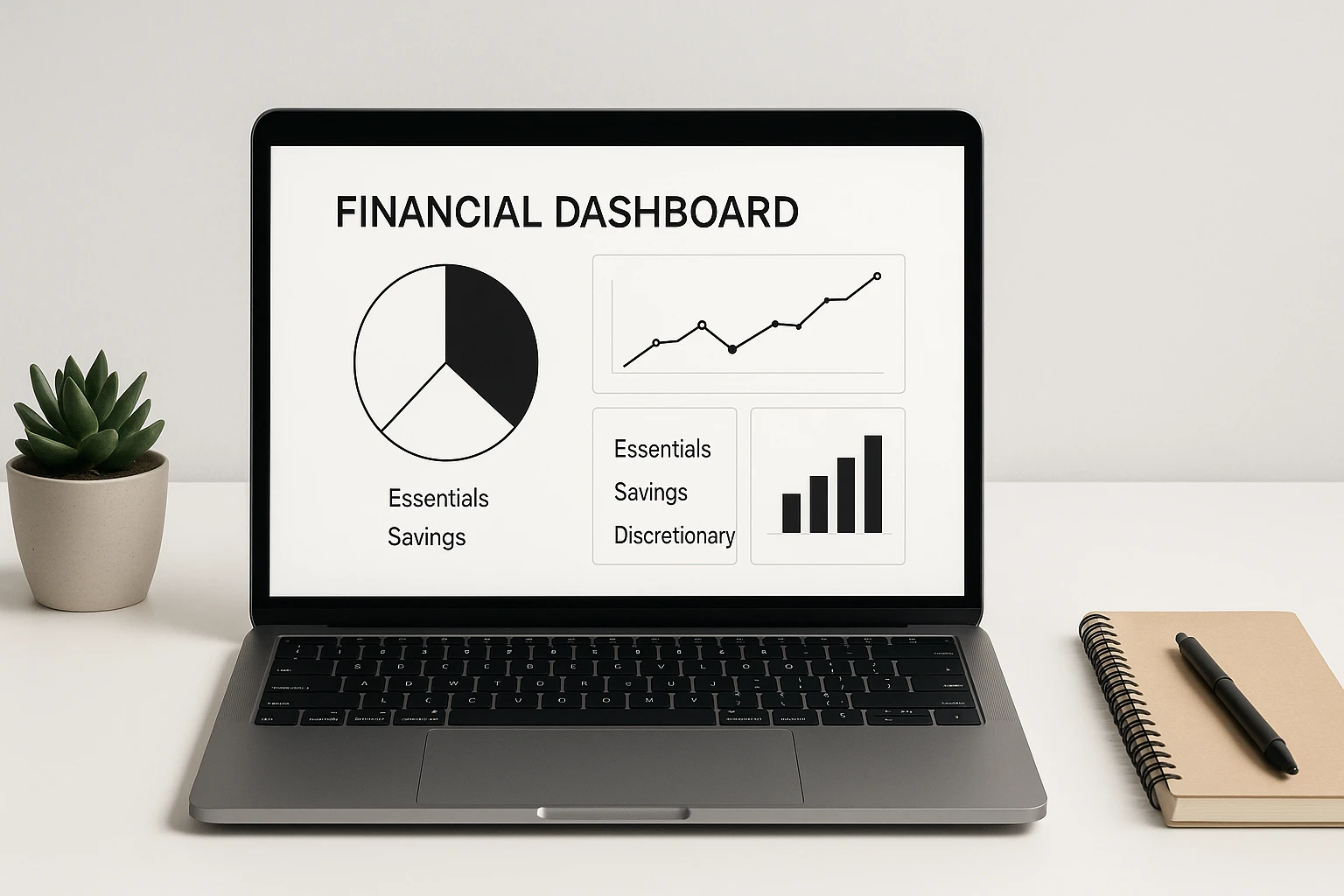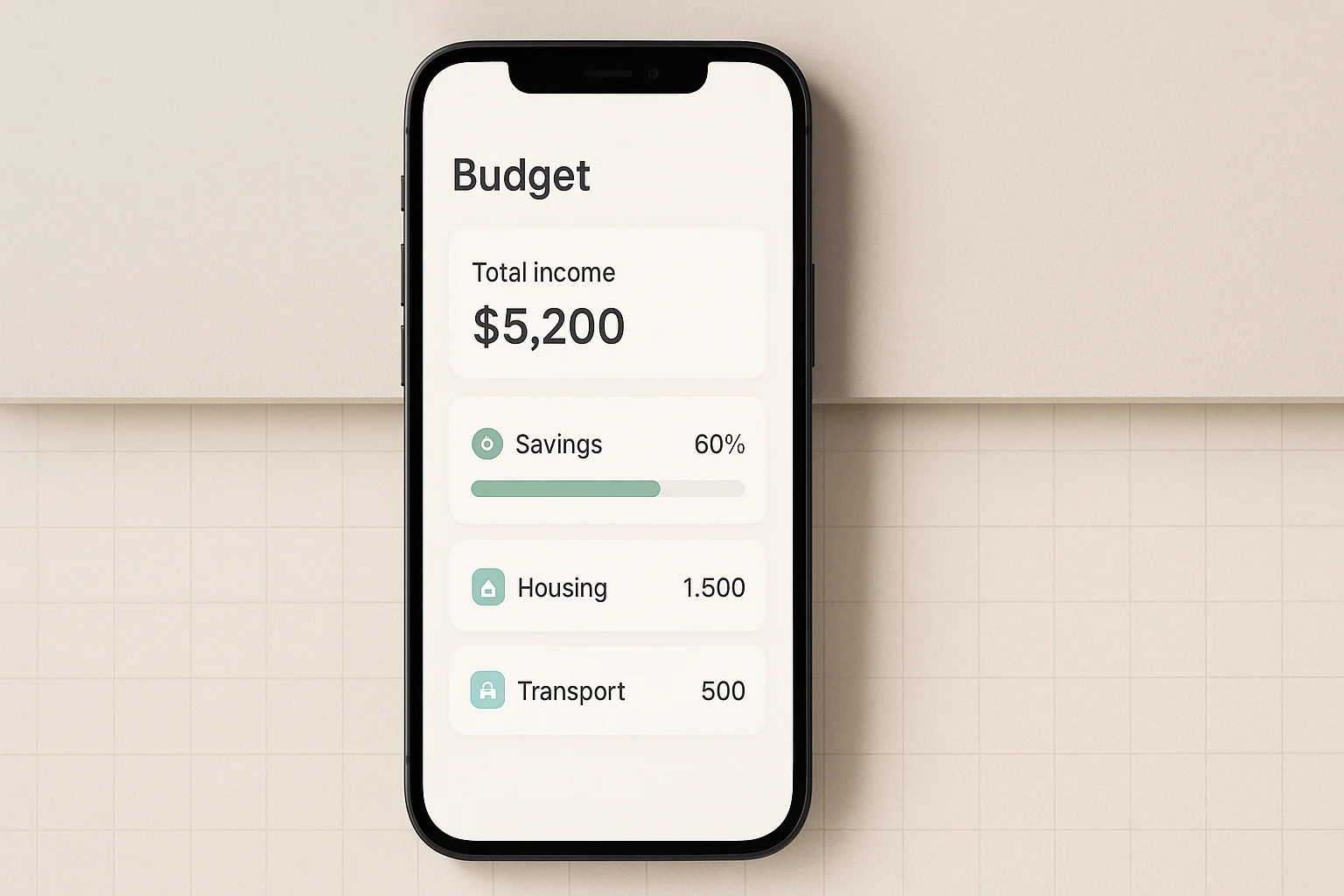
If budgeting apps feel overwhelming, you’re not alone. I used to spend hours wrestling with spreadsheets. Once I leaned on great budgeting tools, things finally felt simple. Here’s what worked for me—and how you can use it, too. Wanna save some cash and live lighter? Check out tips for a frugal lifestyle in 2025.
Simplify Your Finances Now!Interactive Budgeting Streamliner
Budgeting Streamliner
Table of Contents
Key Takeaways for Budgeting
- Discover simple budgeting tools designed for a streamlined, clutter-free approach to managing your money.
- Explore both digital and analog options to find the perfect fit for your lifestyle, including free and paid solutions.
- Learn practical tips for implementing a simple budget, from automating savings to identifying unnecessary expenses.
- Understand how to choose the best tools based on your individual needs, avoiding complexity.
- Get ready for 2025 with a financial strategy that prioritizes clarity, control, and peace of mind.
What is Simplified Budgeting?
Instead of obsessing over every cent, simplified budgeting is about zooming out to see the big picture—figuring out where your money’s going, spotting areas to tweak, and spending in a way that feels true to you. It’s all about building a simple, sustainable system that doesn’t stress you out. For more on pairing simplicity with savings, see how minimalism can save you money.
“Simplifying isn’t about cutting everything out—it’s about making space for what really matters to you.”
Why Choose Great Budgeting Tools?
Traditional budgeting used to stress me out—those never-ending spreadsheets and rigid rules were way too much, especially with my packed schedule. But great budgeting tools? They make budgeting feel manageable. Here’s why I can’t get enough of them:
- Less Stress: They make budgeting feel easy and approachable, not like a huge burden.
- Clear Focus: They help me zero in on what really matters—like my income, key bills, and savings goals—without drowning in details.
- Flexibility: Life’s full of surprises, and these tools let me adapt without overthinking it.
- Meaningful Spending: They nudge me to spend on what I truly value, not just random stuff.
- Time-Saver: They free up my time by keeping things simple, so I can focus on living.
For further insights into budgeting strategies, check out NerdWallet’s guide to budgeting.

Best Great Budgeting Tools for 2025
Here’s a curated list of the top tools available in 2025, categorized by their approach and features to help you choose the best fit:

Envelope-Free Digital Budgeting Tools
These apps offer the benefits of the envelope budgeting system (allocating funds for specific categories) without the hassle of physical envelopes.
You Need a Budget (YNAB)
YNAB’s been a lifesaver for me among simple budgeting tools. It’s all about giving every dollar a purpose with four simple rules: assign your money a job, plan for big expenses, stay flexible, and let your money “age” (think saving before spending). It’s a paid app, but the features and tips it offers make it totally worth it for me. If you’re tackling debt, you might find debt payoff strategies helpful.
- Features: Real-time spending tracking, goal setting, debt management, reporting, and educational resources.
- Simple Appeal: Focuses on intentional spending and planning, rather than restrictive tracking.
- Pricing: Subscription-based.
- Affiliate Link: [Insert YNAB Affiliate Link Here]
Monarch
Monarch’s my go-to for a clean, all-in-one finance app. It links to my bank accounts, automatically sorts my spending, and lets me tweak budget categories to fit my life. It’s a fantastic alternative to Mint, which shut down recently.
- Features: Automated transaction tracking, investment tracking, customizable dashboards, and collaborative budgeting (for couples).
- Simple Appeal: Clean interface, automated tracking, and focus on overall financial health.
- Pricing: Subscription-based.
- Affiliate Link: [Insert Monarch Affiliate Link Here]
Simple Budget Apps
These apps keep things straightforward, focusing on the essentials without overwhelming you with extra features.
PocketGuard
PocketGuard is one of my favorite tools because it shows me what’s left to spend after bills and savings. It syncs with my bank accounts and sorts transactions automatically, so I don’t have to.
- Features: Automated spending tracking, bill tracking, savings goals, and a “PocketGuard” feature that shows you how much you can safely spend each day.
- Simple Appeal: Simple interface, focus on essential budgeting features, and automatic transaction categorization.
- Pricing: Free version with limited features; paid subscription for advanced features.
Goodbudget
Goodbudget’s digital envelope system is perfect for visual folks like me. It helps me divvy up my income into spending categories, keeping things clear and intentional.
- Features: Envelope budgeting, debt tracking, goal setting, and cross-platform syncing.
- Simple Appeal: Focuses on intentional spending and allocation of funds, rather than detailed tracking.
- Pricing: Free version with limited envelopes; paid subscription for unlimited envelopes and other features.
Simple Spreadsheet Templates
I love how spreadsheet templates let me build a budget that’s all my own. They’re super flexible, letting me tweak categories to fit my needs, and keep things clean and simple—a great fit for simple budgeting. Whether it’s tracking income or savings goals, they give me total control without any clutter.
Google Sheets Simple Budget Template
I love using Google Sheets for budgeting because it’s free and lets me customize everything to fit my life. There are tons of simple templates online that keep things clean and easy—perfect for tracking income, expenses, and goals without any fuss. Want more free options? Check out free financial tools for savers.
- Features: Customizable categories, automatic calculations, visual charts, and collaboration features.
- Simple Appeal: Complete control over the budget design, ability to tailor it to specific needs, and free access.
- Pricing: Free.
- Template Example: Search “Simple Budget Template Google Sheets” for various options.
Microsoft Excel Simple Budget Template
Excel’s another go-to for me when I want a custom budget with a bit more power. There are plenty of pre-made simple templates out there, so I can keep things straightforward while still digging into the numbers if I want.
- Features: Customizable categories, advanced calculations, data analysis tools, and professional formatting options.
- Simple Appeal: Flexibility, control, and the ability to create a highly personalized budgeting system.
- Pricing: Requires a Microsoft 365 subscription or a one-time purchase of Excel.
- Template Example: Search “Simple Budget Template Excel” for various options.
Analog-Friendly Budgeting Options
Sometimes, I just need a break from screens, and that’s where analog budgeting tools shine. They feel more hands-on and help me stay mindful about my spending.
Printable Budget Planners
Printable budget planners are my go-to when I want to keep things chill and screen-free. I’ve found tons of layouts online that make tracking income, expenses, and goals feel thoughtful and straightforward. They’re a no-fuss way to stay on top of my money with these tools, and they cost next to nothing—just a few cents for printing!
- Features: Physical record-keeping, mindful budgeting, and a break from screens.
- Simple Appeal: Simple and straightforward, eliminates distractions, and promotes a more intentional approach to spending.
- Pricing: Depends on the design, but usually pretty affordable (just printing costs).
Wallet-Sized Trackers
I love using small notebooks or budgeting cards to jot down my spending wherever I am. They’re super handy, slipping right into my pocket, and keep me clued in on my cash flow without needing an app. These pocket-size tools are a simple, hands-on way to stay mindful about my finances.
- Features: On-the-go tracking, immediate awareness of spending, and a tangible connection to your finances.
- Simple Appeal: Compact, discreet, and eliminates the need for electronic devices.
- Pricing: Really budget-friendly—think a few bucks for a notebook or card.

Frequently Asked Questions
The Future of Budgeting
As we head deeper into 2025, I’m seeing more and more people turn to simple budgeting tools to simplify their finances. With everyone craving less stress and more clarity, I bet we’ll see even cooler, user-friendly apps and resources pop up. Whether you go with an app like YNAB, a Google Sheets template, or a trusty notebook, the key is finding what clicks for you. These tools have helped me take control of my money, cut stress, and spend on what I care about most. Ready to start your own journey to a simpler financial life? You’ve got this! 💰
This content is for informational purposes only and not financial advice. Consult a professional before making financial decisions.

